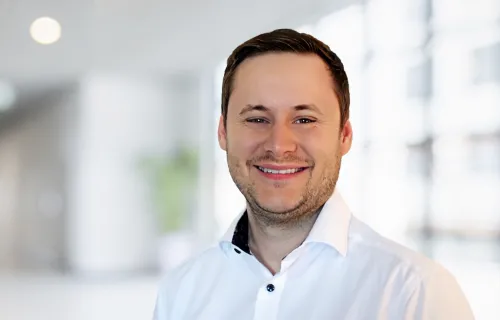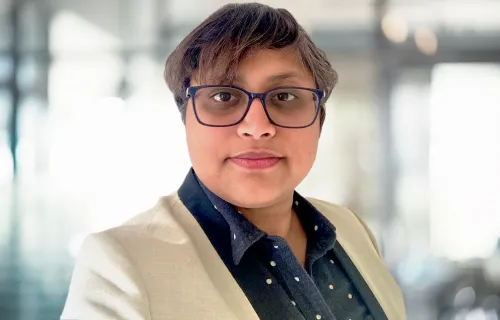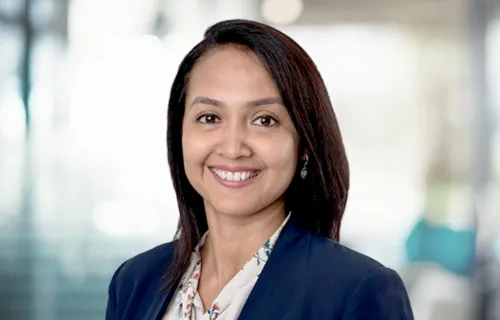Learn about what it’s like to be an application architect through the eyes of Shweta Chalwadi, a CGI Partner based in Mumbai, India.
Shweta, tell us about your role at CGI.
I joined CGI in 2004 as a trainee software engineer. Today, I work as an application architect, helping ensure that the systems we build for our government clients not only function as intended, but truly meet their goals.
I act as a bridge between our engineering teams, project managers, and client stakeholders, making sure we’re all on the same page. While I don’t manage a team, I play a key role in shaping the direction of projects, maintaining technical quality, and mentoring developers.
I spend a lot of my time troubleshooting complex technical challenges and implementing modern engineering best practices. Lately, I’ve also been evaluating and integrating emerging technologies, like AI-assisted coding tools, to help teams boost productivity and write cleaner, better code. It’s about delivering solutions that are reliable, scalable and aligned with the client’s vision—on time, within budget, and to a high standard.
Can you share a project you worked on recently that has made a significant impact to a client?
Absolutely. One project I’m especially proud of involves developing a codeless extension framework for our enterprise resource planning (ERP) solution, CGI Advantage. The goal was simple but powerful: give business teams more autonomy to configure workflows, set up rules, and tweak the UI themselves, without having to rely on developers to write the code.
The result? Faster updates, more control for users, and a lot less back-and-forth between business and development teams, which in turn improved efficiency. It made the solution far more flexible and responsive to client needs, and that was incredibly rewarding to see.
How did you become an application architect? Was it always your end goal?
I started out as a developer because I’ve always loved writing code. Over time, I realized I was just as passionate about designing systems, solving complex problems, overseeing projects and ensuring our solutions could scale and adapt to evolving business needs.
Becoming an architect felt like a natural next step; it’s a role that blends hands-on technical work with leadership and strategic thinking. I also experiment with AI, cloud and low-code platforms to stay ahead of the curve. Knowing my work directly influences client outcomes keeps me motivated every day.
Can you walk us through your typical workday?
My day usually starts pretty early—around 6 a.m. I like taking a short walk and catching up on tech news. Then, I review my calendar and plan my to-do list based on what I need to prioritize for the day. I like having calm, structured mornings, so my first couple of hours are dedicated to deep, focused tasks like design reviews and architecture decisions, or I explore new tools before my day fills up with meetings.
Since I work with global teams across time zones, I also check for any overnight updates or critical issues that need my immediate attention. Then, I connect with my manager, colleagues and clients, as needed, to align on deliverables, project updates or last-minute changes. It’s essential that I stay connected and organized to effectively support my colleagues and stakeholders.
The rest of my day is spent working on various projects. Typically, I lead design and code reviews, assess potential technical risks, and collaborate with different teams to tackle them. I also work with clients and colleagues to align solutions with business goals, support troubleshooting during critical delivery phases, and lead proof-of-concepts, especially around AI adoption.
With such a packed schedule, how do you make time for learning and development?
Learning has always been a priority for me. It’s how I have grown professionally over the past two decades. CGI has a strong culture of learning with opportunities to upskill through structured learning programs and to obtain certifications. My manager is very supportive and always encourages me to explore areas I’m curious about— whether it’s deepening my technical expertise, exploring leadership pathways, or diving into emerging areas like AI or cloud.
I earned my TOGAF (The Open Group Architecture Framework) certification to strengthen my enterprise architecture skills and upskill in AI and machine learning fundamentals. I also actively explore new tools such as GitHub Copilot for programming and codeless platforms. I make it a point to stay curious about emerging technologies and collaborate with colleagues across different functions. This enables me to be a well-rounded leader who can deliver technical solutions while offering strategic guidance and driving value for our clients and internal teams.
Our internal learning platform, CGI Academia, and even YouTube (depending on the topic) are great resources when I’m looking for “bite-sized” learning sessions. We also have regular AI knowledge-sharing sessions within our team to exchange learnings and use cases. These sessions are a goldmine of practical insights on applying AI.
Looking back, what advice would you give your younger self?
I would tell my younger self to say yes to new opportunities, even if they feel outside my comfort zone. Some of my most significant growth moments have come from roles or projects I initially didn’t feel ready for, but stepping up taught me more than any formal training ever could.
I’d also tell myself to stay curious, seek mentorship early, and invest in skills like communication and collaboration. The ability to influence, lead without authority, and drive outcomes across teams is just as important as deep technical expertise, especially as you move into senior and strategic roles.





